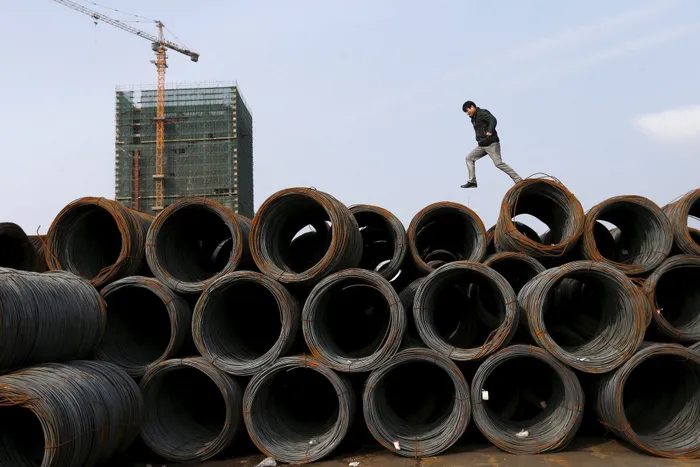Are we heading for a recession?

Photo: Reuters Photo: Reuters
Johannesburg – South Africa’s economy seems to be slowing
as manufacturing production, retail sales and the Trade Expectations Index are
all down.
However, BankservAfrica’s latest Economic Transaction
Index (BETI) for March reflects stronger domestic economic activity with real
gains reflected on a monthly – and quarterly basis.
On Wednesday, Statistics SA said retail sales, measured
in constant 2011 prices to strip out inflation, declined 1.7 percent
year-on-year in February 2017.
Negative annual growth rates were recorded for those
selling clothing, furniture and white goods, as well as those in the hardware
sector.
Stats SA says the main contributor to the decrease was
retailers in textiles, clothing, footwear and leather goods.
Measured on a month-on-month basis, retail sales gained
0.8 percent, Stats SA says, although sales were also down quarter-on-quarter.
This is despite the three-month period holding the
traditional bumper months of December and January, when festive season shopping
and back-to-school usually leave tills ringing.
Meanwhile Tuesday figures from the statistics agency
showed manufacturing production dropped precipitously in February, declining
3.6 percent year-on-year (the worst point since July 2014, which was strike
related, FNB pointed out) and 0.4 percent lower month-on-month.
Read also: Manufacturing data hints at recession
This was in sharp contrast to January’s positive, albeit
meagre growth of 0.4 percent year-on-year, FNB Senior Economist Jason Muscat
noted. Muscat said, based on manufacturing data, there was a possibility of a
technical recession as SA’s economy contracted 0.3 percent in the December
quarter.
A technical recession is two consecutive quarters of
contraction. SA’s gross domestic product is expected by most sources to grow at
about a percent this year after a measly 0.3 percent gain in 2016.
Muscat said a first quarter recession would not have been
the result of the recent cabinet reshuffle or the ratings downgrade, which
suggests that there may be further contractions in the coming quarters given
our expectations of lower business and consumer confidence in light of
heightened political uncertainty.
Trade expectations
Meanwhile, the seasonal adjusted six-month Trade
Expectations Index (TEI) weakened notably and declined from 61 in February to
51 March 2017 – the weakest level since April 2016, the South African Chamber
of Commerce and Industry said on Wednesday.
With such indices, anything below 50 indicates a negative
outlook by those surveyed.
SACCI notes the TEI was on a strong path of recovery from
May 2016 up to February 2017.
“However, due to extraneous events, all components of
trade expectations were severely and negatively affected in March 2017.”
The chamber also points out that 44 percent of responses
were in before the March 27 recall of then Finance Minister Pravin Gordhan. Gordhan
was subsequently axed and replaced by Malusi Gigaba, who was seconded from Home
Affairs.
His departure left the JSE reeling and the rand has lost
10 percent since he was recalled from the international investment roadshow to
the US and UK. SA was subsequently downgraded to junk by S&P Global and
Fitch, both of which cited uncertainty caused by the Cabinet shuffle.
“The March 2017 Survey may therefore not reflect the full
short-term impact of the political developments of the last few days of March
2017. The subsequent downgrade to junk status by Standard and Poor’s and Fitch
will also have longer-term repercussions for trade conditions,” says SACCI.
Meanwhile, BankservAfrica’s latest Economic Transaction
Index (BETI) for March may be a bright spot amid the negative indices. Its
near-cast – making it closer to real time than other indexes –stronger domestic
economic activity with real gains reflected on a monthly – and quarterly basis.
“The BETI improved month on month by 0.7 percent in March
– the third consecutive month of positive growth,” says Dr Caroline Belrose,
Head of Information Services at BankservAfrica.
The monthly improvement – though slower than that
experienced between February and January – confirms for BankServAfrica that the
economy is on the road to recovery. This was supported by the
quarter-on-quarter changes where the BETI improved by 2.7 percent the strongest
quarterly growth since April 2016, it says.
“The speed of recovery from the weak fourth quarter of
2016 suggests that the first quarter of 2017 had good GDP growth,” says Mike
Schüssler, Chief Economist at Economists dotcoza.
BankServAfrica says, while green shoots are starting to
grow, it’s unclear how recent political and economic developments in South
Africa may change this.
BUSINESS REPORT
ONLINE